Still snarling after 40,000 years, a giant Pleistocene wolf discovered in Yakutia
By The Siberian Times reporter
07 June 2019
Sensational find of head of the beast with its brain intact, preserved since prehistoric times in permafrost.
The Pleistocene wolf’s head is 40cm long, so half of the whole body
length of a modern wolf which varies from 66 to 86cm. Picture: Albert
Protopopov
The severed head of the world’s first full-sized Pleistocene wolf was
unearthed in the Abyisky district in the north of Yakutia.
Local man Pavel Efimov found it in summer 2018 on shore of the Tirekhtyakh River, tributary of Indigirka.
The wolf, whose rich mammoth-like fur and impressive fangs are still
intact, was fully grown and aged from two to four years old when it
died.
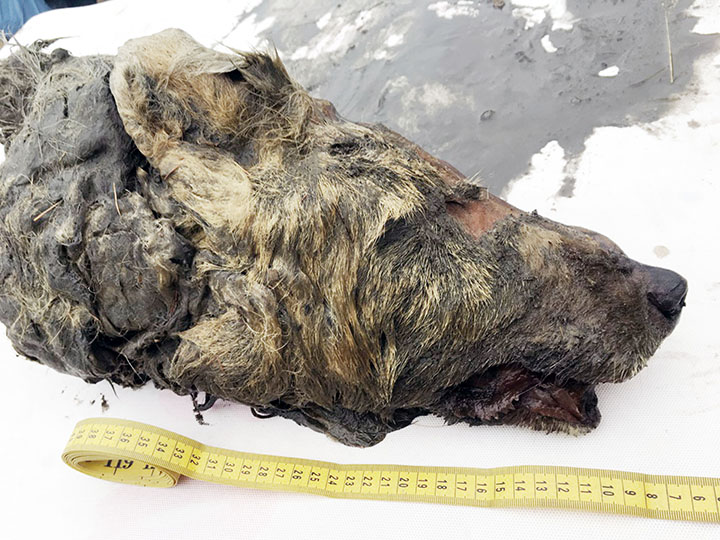
The wolf, whose rich mammoth-like fur and impressive fangs are still
intact, was fully grown and aged from two to four years old when it
died. Picture: Albert Protopopov
The head was dated older than 40,000 years by Japanese scientists.
Scientists at the Swedish Museum of Natural History will examine the Pleistocene predator’s DNA.
‘This is a unique discovery of the first ever remains of a fully
grown Pleistocene wolf with its tissue preserved. We will be comparing
it to modern-day wolves to understand how the species has evolved and to
reconstruct its appearance,’ said an excited Albert Protopopov, from
the Republic of Sakha Academy of Sciences.
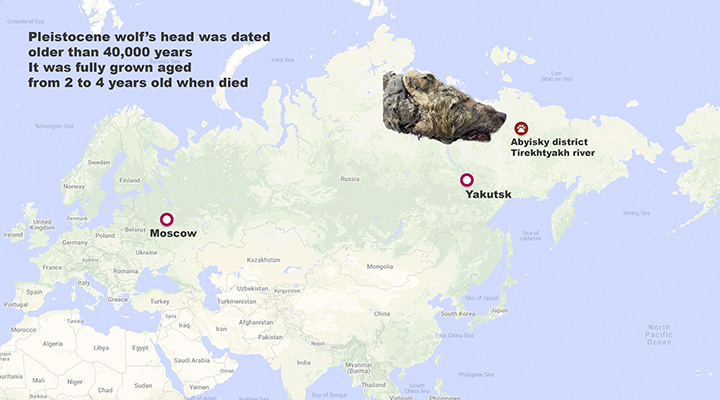
Local man Pavel Efimov found it in summer 2018 on shore of the Tirekhtyakh River, tributary of Indigirka.
The Pleistocene wolf’s head is 40cm long, so half of the whole body length of a modern wolf which varies from 66 to 86cm.
The astonishing discovery was announced in Tokyo, Japan, during the
opening of a grandiose Woolly Mammoth exhibition organised by Yakutian
and Japanese scientists.
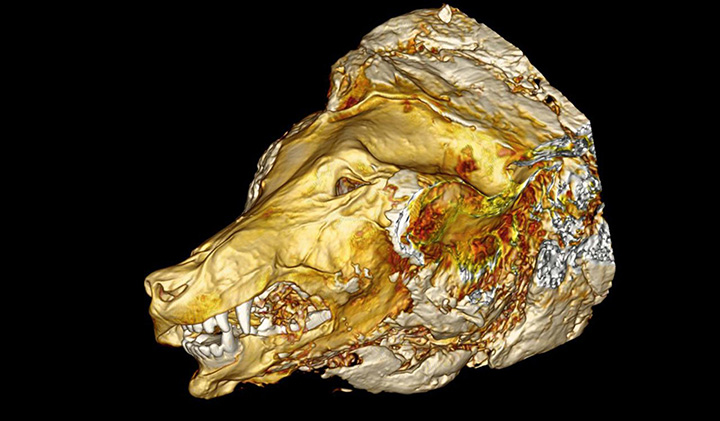
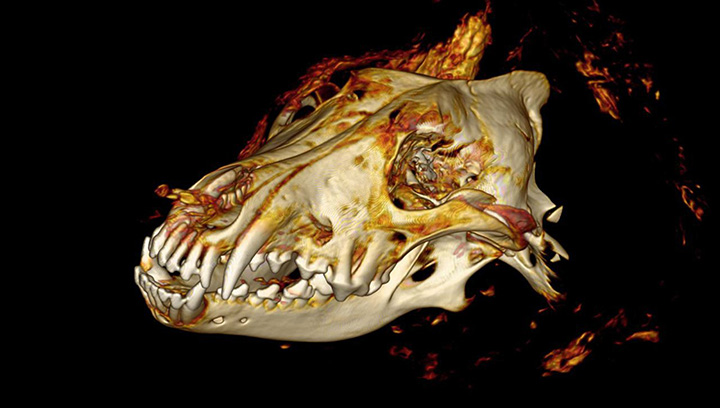
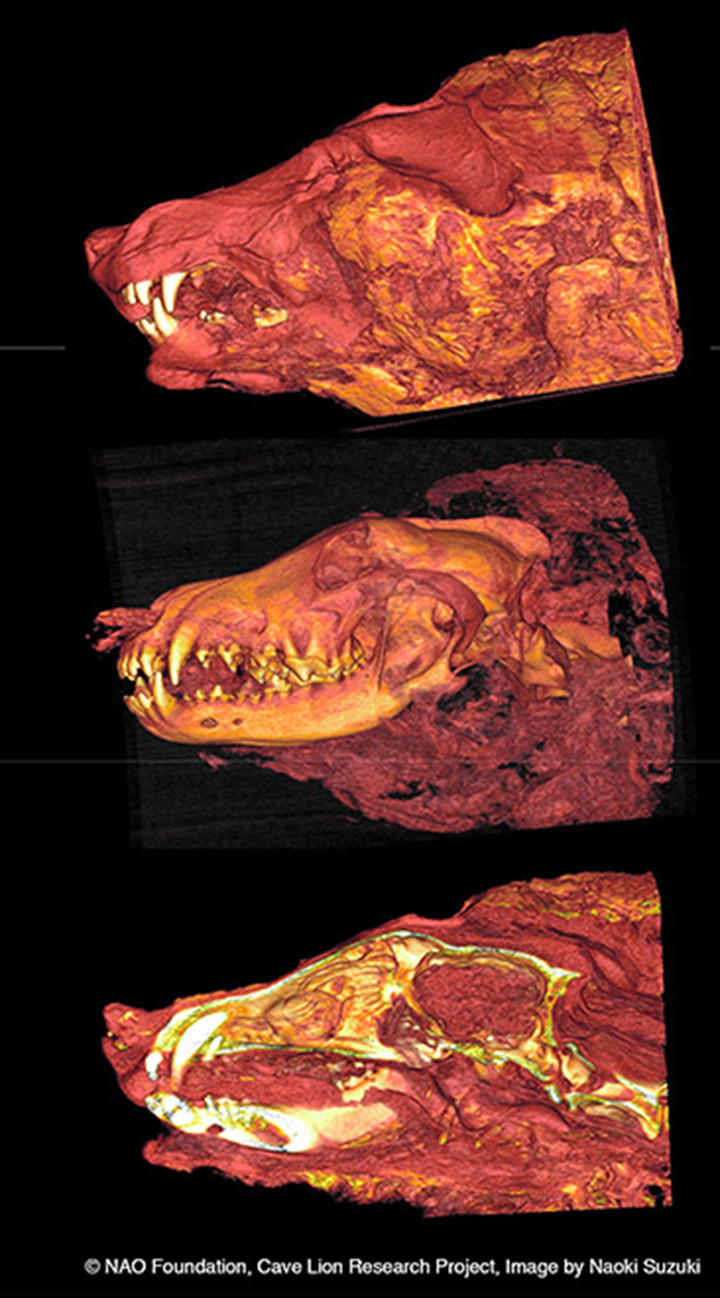
CT scan of the wolf's head. Pictures: Albert Protopopov, Naoki Suzuki
Alongside the wolf the scientists presented an immaculately-well preserved cave lion cub.
‘Their muscles, organs and brains are in good condition,’ said Naoki
Suzuki, a professor of palaeontology and medicine with the Jikei
University School of Medicine in Tokyo, who studied the remains with a
CT scanner.
‘We want to assess their physical capabilities and ecology by comparing them with the lions and wolves of today.’
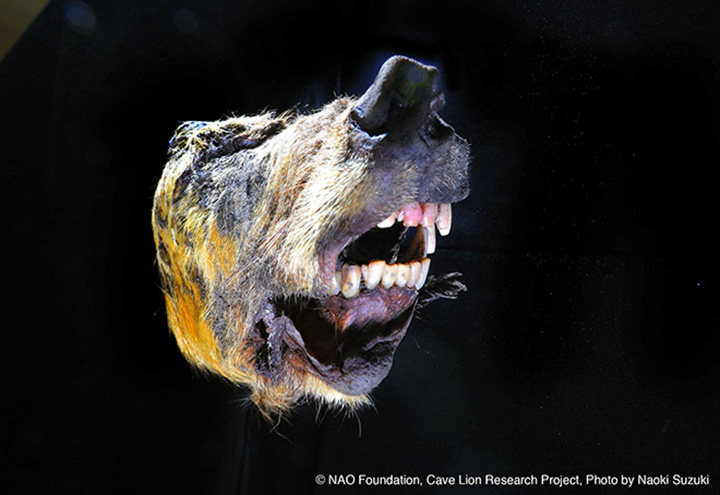
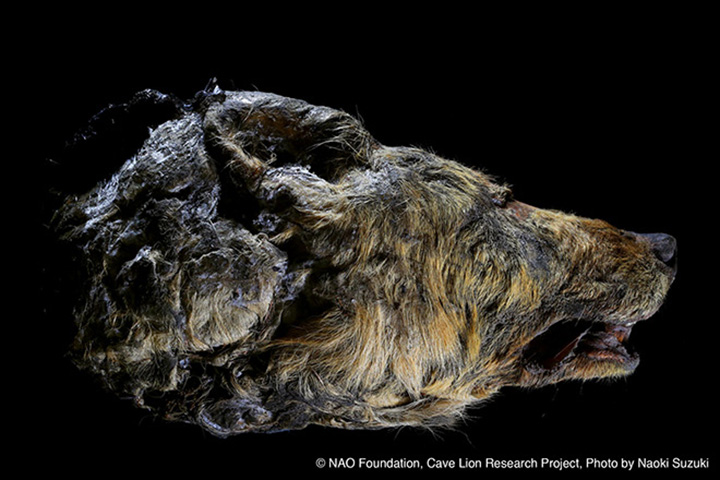
‘This is a unique discovery of the first ever remains of a fully grown Pleistocene wolf with its tissue preserved.' Pictures: Naoki Suzuki
The cave lion cub named Spartak - previously announced - is about 40cm long and weighed about 800 grams.
Scientists believe the cub died shortly after birth.
The recent discovery follows that of the remains of three cave lions in 2015 and 2017 by the same team.
The cave lion cub named Spartak - previously announced - is about
40cm long and weighed about 800 grams. Pictures: The Siberian Times,
YSIA
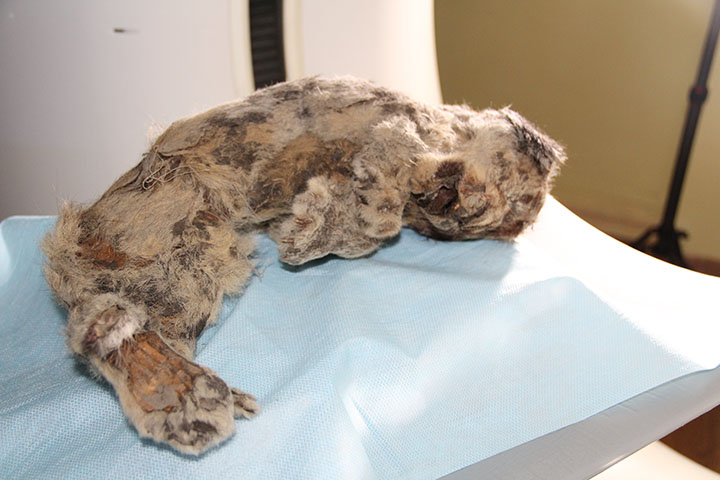

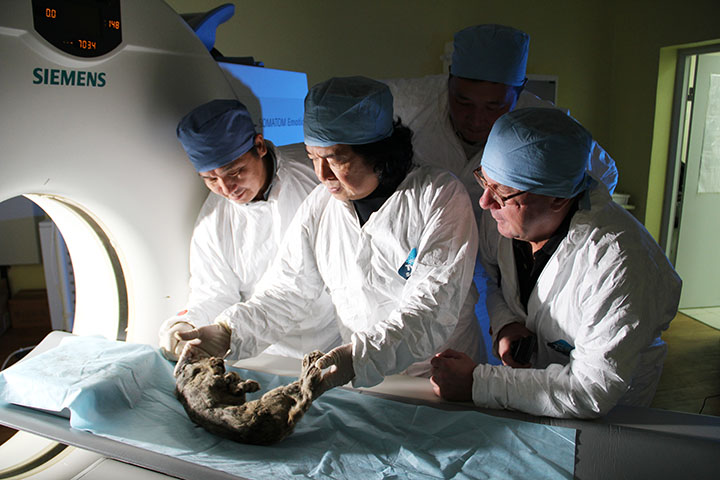
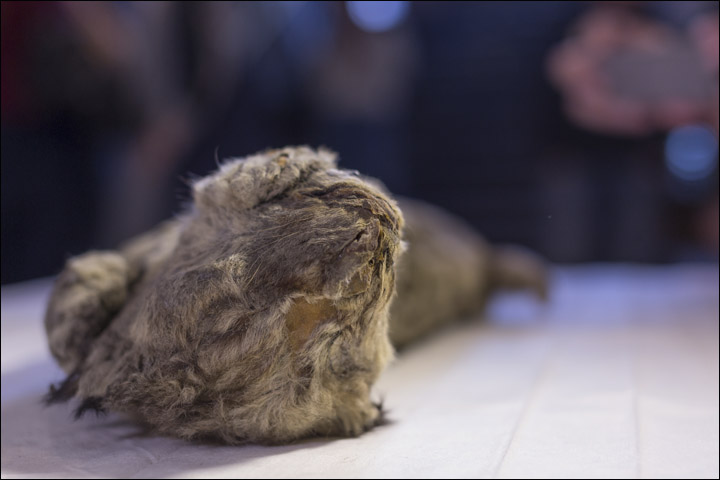
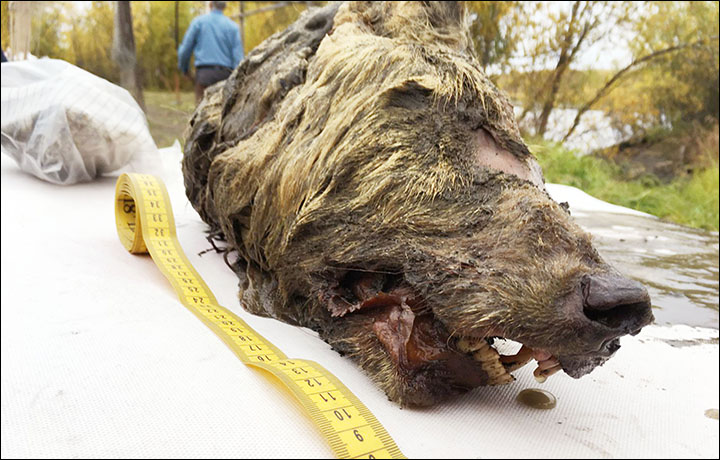
Nenhum comentário:
Postar um comentário
Observação: somente um membro deste blog pode postar um comentário.